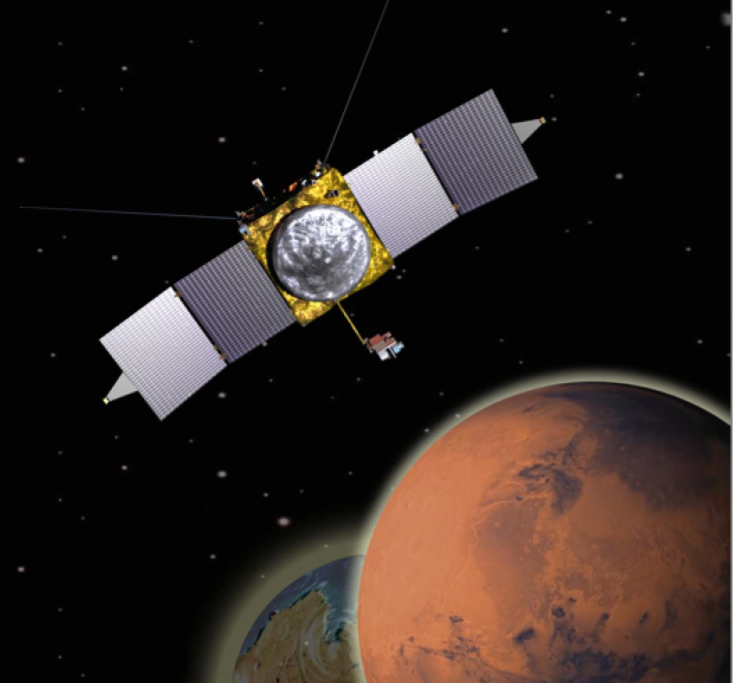MAVEN
Mars Atmosphere and Volatile Evolution
Deciphering Mars' atmospheric history

The Mars Atmosphere and Volatile Evolution (MAVEN) mission began orbiting Mars on September 21, 2014. The mission goal is to determine how Mars lost its atmosphere and how this played in changing the Martian climate through time. Where did the atmosphere—and the water—go? The eight instruments on board are gathering information about the Martian upper atmosphere to help scientists understand how the Red Planet’s climate changed from warm and wet to today’s cold, dry conditions.
Mission Class:
Mission Status:
LASP Roles:
Science Target:
Mission Focus:
Primary Mission Site:

Launch date: November 18, 2013
Orbit Insertion: September 14, 2014
Prime mission: 2 years
Extended mission: 2025
Lead institution: LASP
Lead Funding Agency: NASA Planetary Sciences
Partners: NASA Goddard Space Flight Center, Lockheed Martin Corp., University of California, Berkeley/Space Science Laboratory, NASA Jet Propulsion Laboratory, NASA Headquarters
MAVEN is the first mission to focus primarily on the upper atmosphere of Mars. MAVEN scientists are using the data from the spacecraft to determine the structure and composition of the Martian atmosphere and ionosphere, what processes control the amount of atmospheric escape, and what is the total loss to space over time. Understanding Mars’ atmosphere will give scientists insight into the history of Mars’ atmosphere and climate, liquid water, and habitability.
MAVEN science publications: https://lasp.colorado.edu/maven/science/released-results/publications/
MAVEN IUVS data can be downloaded directly from the MAVEN Science Data Center.
https://lasp.colorado.edu/maven/sdc/public/pages/datasets/iuvs.html
